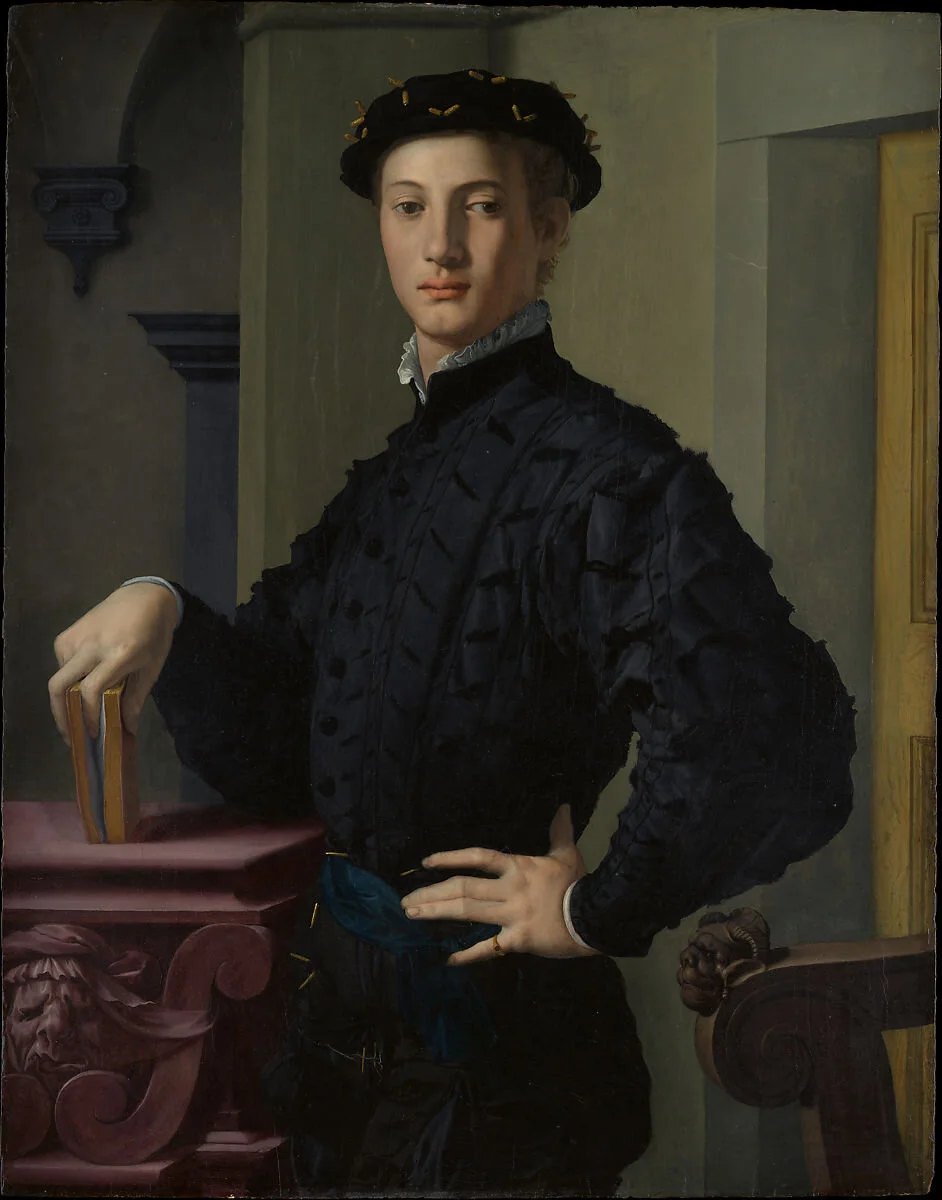THE NEW CRITERION, September 2021
On a discovery of fifteenth-century Venetian glass beads in Alaska.
Venice can be a furnace, as anyone who visits in midsummer will tell you. Beyond the heat of the Adriatic sun, the lagoon city is also a furnace for culture. This is why we still visit: to experience those ingredients of East and West, of Rome and Byzantium, of Europe and Asia and past and present, that melted together and crystallized through art and architecture into islands of faith and fortune.
Out of that heat came many miracles. In the fifteenth century, Venice’s glass factories on the lagoon island of Murano produced a particular miracle that has only now come to light. One day, over five hundred years ago, a guild of Murano glassmakers combined a mixture of silica, plant ash, lime, cobalt, and copper. They fueled their furnace with alder and willow wood. They added their grains of silica made from the sands of Crete and Sicily and the quartz of the local Ticino and Adige rivers. Turned malleable through the ash, strengthened by the lime, the silica melted into molten glass that was lustrously colored like a milky blue cloud, the result of the material’s exposure in heat to the cobalt and copper. The glassmakers then extracted the mixture. They stretched it into a thin cane, or drawn tube, until it was no more than half an inch thick. Then they cut the tube into tiny segments and reheated the pieces in a special rotating furnace. This final process smoothed over the edges, until the glass cuttings became polished and round.
What emerged that day were translucent cerulean globes of a dreamy, oceanic radiance. Then as now they were the coveted creation of that particular Venetian genius for melding art and technology into objects that are unlike anything else in the world. Bisected with tiny holes, the beads were designed to be tied together. Little did the glassmakers of Murano know quite how far those ties would take them.
The glassmaking guilds of Venice developed their proprietary techniques for manufacturing rosary beads—paternostri—of extraordinary beauty. In the markets to the east, beyond Renaissance Christendom, these same glass beads became prized as veriselli—imitation gemstones. Two centuries before, the Venetian Marco Polo had famously opened up the worlds of Asia, returning with paper and stories of the Silk Road. Now it was the glass of Venice, an alchemy of art and artifice, that was making its way to the Orient.
Out of the furnaces of Venice, those blue beads ended up traveling farther than even Marco Polo could have imagined. In the months and years after their creation, a handful of the beads followed the Silk Road routes to the east. Down the Adriatic and around the horn of Greece, past the Black, Caspian, and Aral Seas, the beads moved hand over hand into China. Then to the north and east, they passed into aboriginal Asian territories. Eventually they reached the tribal lands along the northern Pacific. Now at the western edge of the Bering Sea, at the outer edge of Asia, the beads went again by boat. This time they were traded along indigenous fishing routes. Now in the hands of prehistoric Eskimos, they crossed the Bering Strait, a journey of over fifty miles by kayak—remarkably, into present-day Alaska.
It wasn’t until 1741 that Vitus Bering, a Danish cartographer in the service of Russian explorers, first made contact with the native peoples of southern Alaska. The sea and strait dividing the Asian and North American continents are named in his honor, and his discoveries ended the region’s prehistoric period by opening the door for Russian traders. The Murano beads, entering North America sometime in the 1400s, predate the arrival of European contact there by centuries.
Venetian beads found in northern Alaska. Image: Kunz & Mills / American Antiquity.
Following native trade routes along the Noatak River, Eskimos carried these beads up from the Chukchi Sea and the Kotzebue Sound. Eventually they reached the crest of the Continental Divide at a place called Punyik Point, a site in the Arctic tundra along the north shore of Etivlik Lake suited for caribou hunting and trout fishing. Here along the western Brooks Range, the Colville River begins its Arctic journey among the shrub-willow patches to the Beaufort Sea to the north east.
Judging by their well-worn appearance, the Venetian beads were prized, rubbed, and held close. The Eskimos likely divided them, now tied with local twine and mixed in with cold-hammered copper jewelry of native manufacture, among a family clan living in different temporary dwellings. One day, they hid the beads along with their local jewelry behind the benches and in the entry tunnels of the temporary winter shelters they had dug into the earth. Then, for reasons we can only imagine for a nomadic people who left no written record, they departed and never returned for their unique possessions. Maybe there was a catastrophe. Maybe they were simply unable to retrieve them. Over the seasons, as the shelters collapsed back into the earth, the beads came to rest among the caribou bones. They were only rediscovered and identified over five centuries on, matching beads found at two other Arctic sites, all connected by the drainages of nearby rivers.
When the archaeologists Michael L. Kunz and Robin O. Mills announced the finding of these Venetian beads in February 2021 in the journal American Antiquity—the result of decades of research and field investigation at three archaeological sites—they speculated that the objects were among the earliest evidence of European culture in the Americas. Through radio-carbon dating of the locally sourced twine discovered among the neighboring jewelry, and what is otherwise now known about the nomadic dwellings in which they were found, they concluded that the beads most likely arrived in their resting place sometime in the middle of the 1400s. The two archaeologists called their discovery the “first documented instance of the presence of indubitable European materials in prehistoric sites in the Western Hemisphere as the result of overland transport across the Eurasian continent.” That means the beads entered the North American continent many decades before Columbus’s arrival in the West Indies in 1492—an event that also brought Venetian beads to the New World.
It took a leap of faith for those beads to cross the ten-thousand-mile route from the Venetian lagoon to Punyik Point. It also took a leap and many years of research for archaeologists, digging for over half a century around the outlines of what remained of those small nomadic dwellings, to realize quite what they had found. Yet seeing those beads today, as extraordinary as it now seems, it is still possible for us to understand the dynamics that delivered them over such vast distances to be traded among such disparate peoples.
We speak too little of beauty. Yet, time and again, the wealth of culture, and the creativity to embed that culture into things of beauty, has the power to surprise. In the affections of art, of music and dance, even of captivating ideas, humanity extends its reach against the odds. Beauty can draw the lines of culture over vast distances, making the most unexpected connections. It can also be all that remains, not just of value, but of values, long outlasting the people who created, conveyed, and protected it. If only we would recognize culture qua culture, as something to be prized for its richness and coveted for its complexities outside of the diktats of the present moment.
There was a time, even in the lifetime of many readers today, when the arrival of European culture in the Americas was considered a cause for celebration. Perhaps this celebration was too unalloyed and too unchallenged, but American civic identity has long recognized the events around it as world-defining, on the order of the first humans stepping out of Africa, and not unreasonably so. In another time, the discovery of the Venetian beads of Punyik Point might have been heralded along the lines of Columbus’s first landfall, or the Pilgrims’ first Thanksgiving. Beyond Viking outposts in Greenland and Newfoundland, which might date to 1000 A.D., everything that European civilization has touched in the Americas started at Punyik Point, with tiny glass beads seeding the crest of the Continental Divide. The story invites wonder, not at conquest, but at culture and its astonishing powers to connect worlds we otherwise insist are unconnected.
We live at a moment when the historical overlay of European culture onto the Americas has never seemed more tenuous. The regular attacks on its symbols and rituals now feel like concerted acts of extirpation, with energies that seem to burn for nothing less than the annihilation of Western culture down to the roots of the American soil. The culture of the West has not always been here, the arguments go. It is alien, compromised, bringing with it a set of foreign ideals that have not nearly been met. Native peoples have also lived in the Americas for thousands of years—if not since the beginning of time, as oral traditions may teach, then at least for longer than anyone can remember, through the ice age, through periods when even the landscape looked quite different and the continents of America and Asia may have been connected. And these critics are right, at least about the West’s relatively brief presence in the Americas. Six hundred years is but a moment compared to six thousand years, or thirty thousand years.
The discovery of the Venetian beads should, in fact, remind us of this impermanence. It is precisely this impermanence, the bead-like preciousness of culture, that needs care and protection. Western culture often exists as an intervention—a cultivated garden, a voice in the wilderness, a remote settlement. Some of its most lasting moments have been on the margins, where cultures are set in relief and the divisions between settled and unsettled are most deeply felt. Western culture can be best expressed in these extended, exploratory, colonizing forms—as refugees from the Trojan War setting foot on the coast of Italy, or American astronauts touching down on the lunar surface, or Venetian beads adorning a family of Eskimos. This is why the culture of the Americas has been so remarkable in its heterogeneous, modern form. Those Venetian beads signaled the beginning of a moment that has enriched the world of culture.
The discovery of the Venetian beads should also suggest the true complexity of that exchange. Western culture arrived here as an interchange, an import to the Americas as much as an export of Europe. If only we would recognize and protect that culture today as well as its Asian and Mesoamerican custodians did half a millennium ago. The five-hundred-plus-year history of European contact in the Americas may be a blink of the eye, but consider what has been achieved in that short time. No matter how it may end, consider also that the future of the Americas will be buried together—
Native and European jewels mixed among the caribou bones.
For the prehistoric people of northwest Alaska, even if they could not have imagined the Basilica of San Marco with its celestial domes, they knew they had something remarkable in their tiny globes of sky, crystallized in Mediterranean sand. The same goes for the unimaginable chain of hands that connected these people through those beads, from the Arctic tundra of Punyik Point all the way back to the Murano glass guilds of fifteenth-century Venice.






